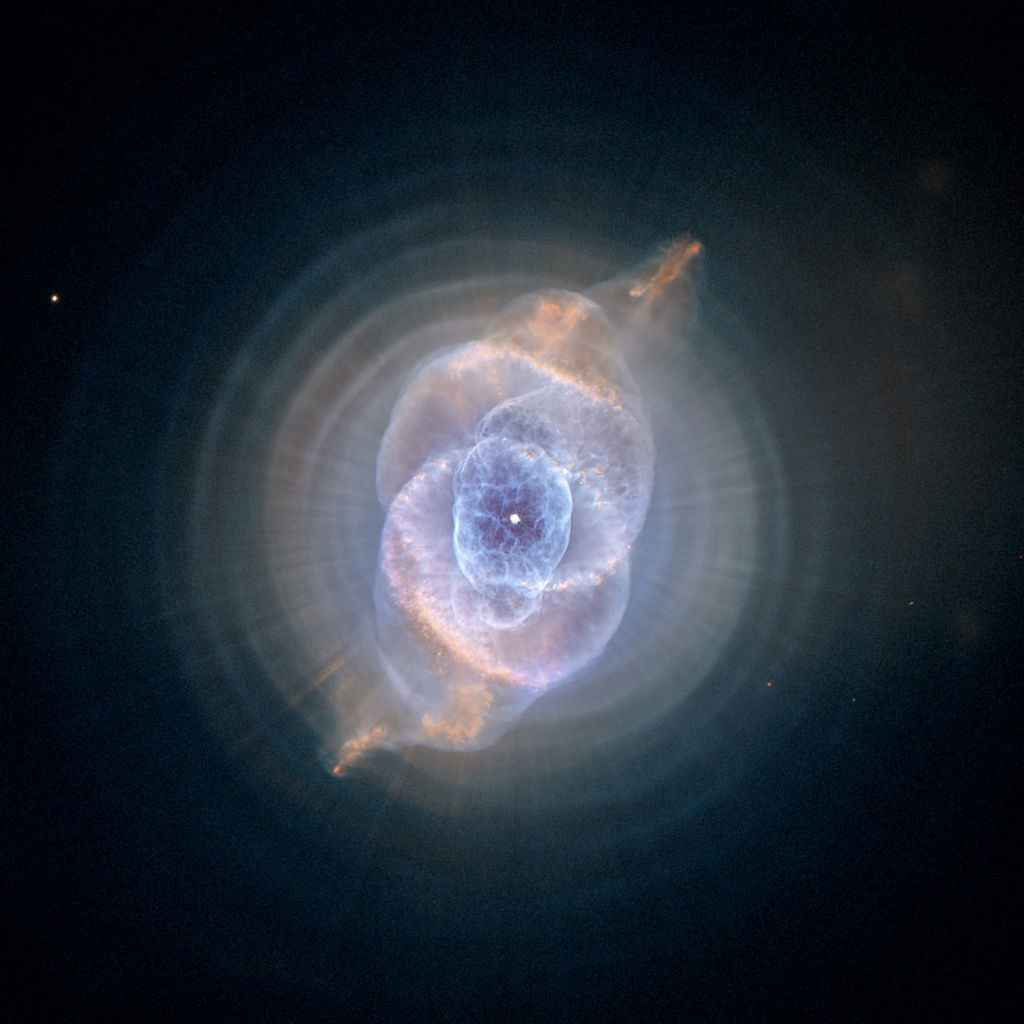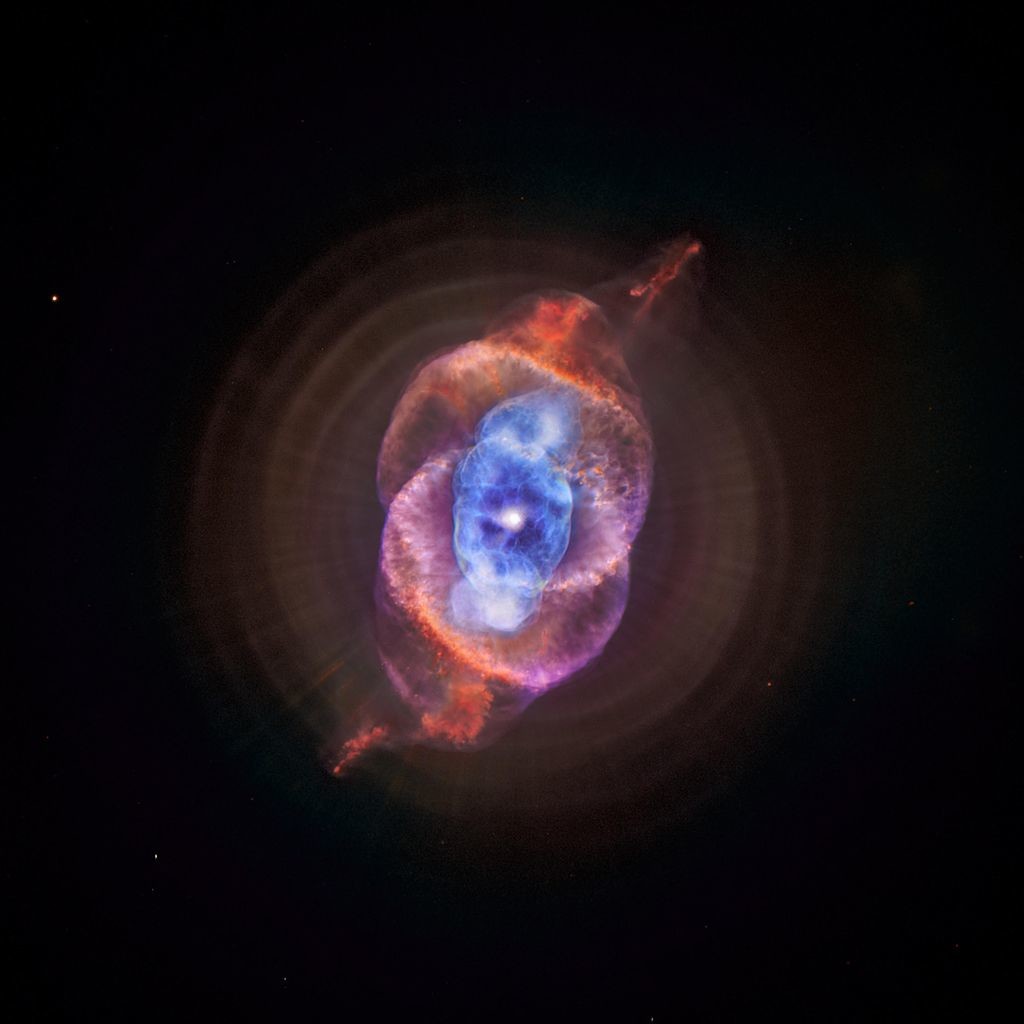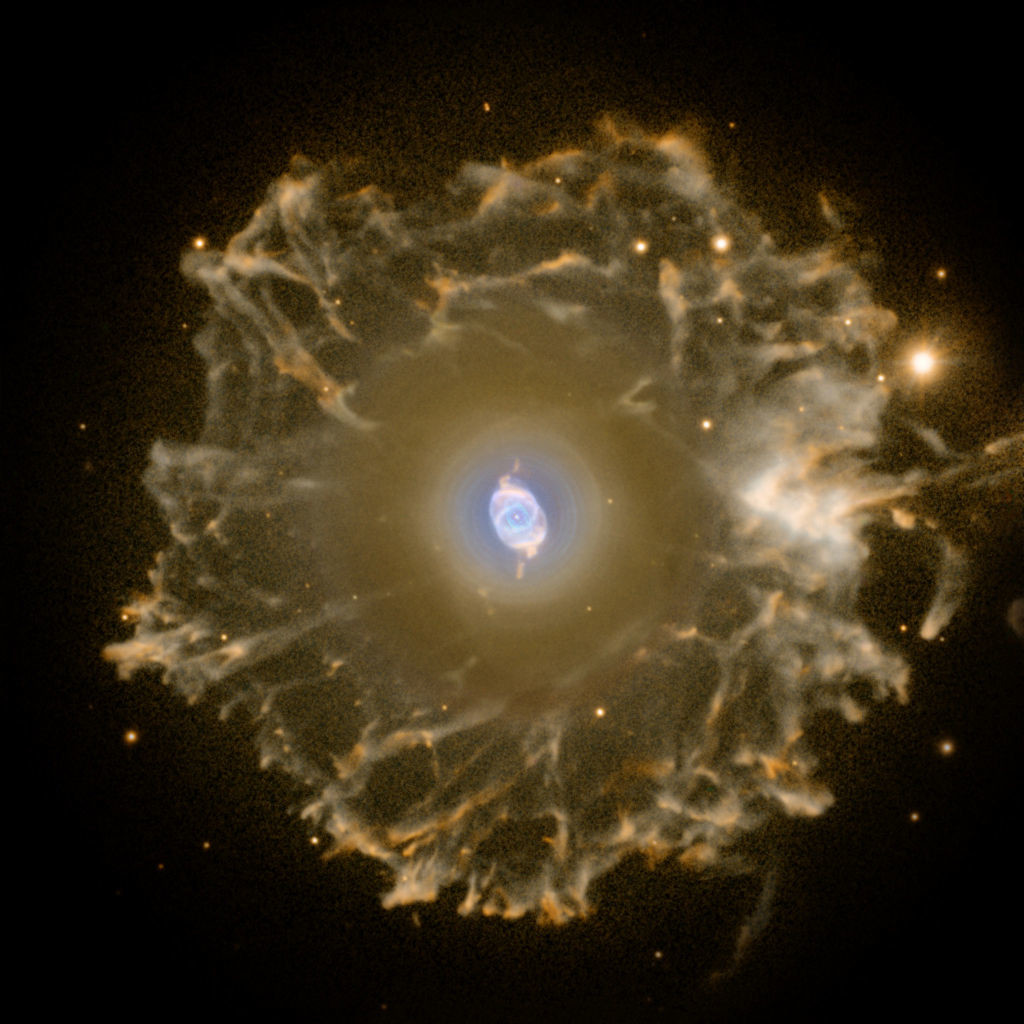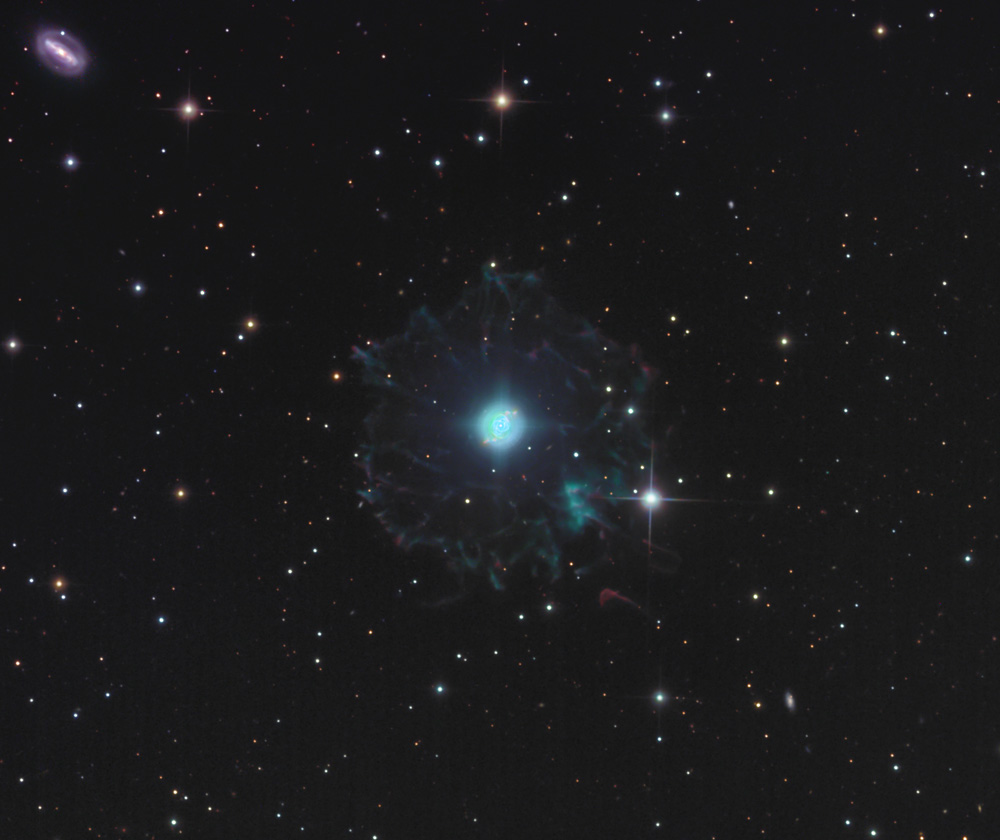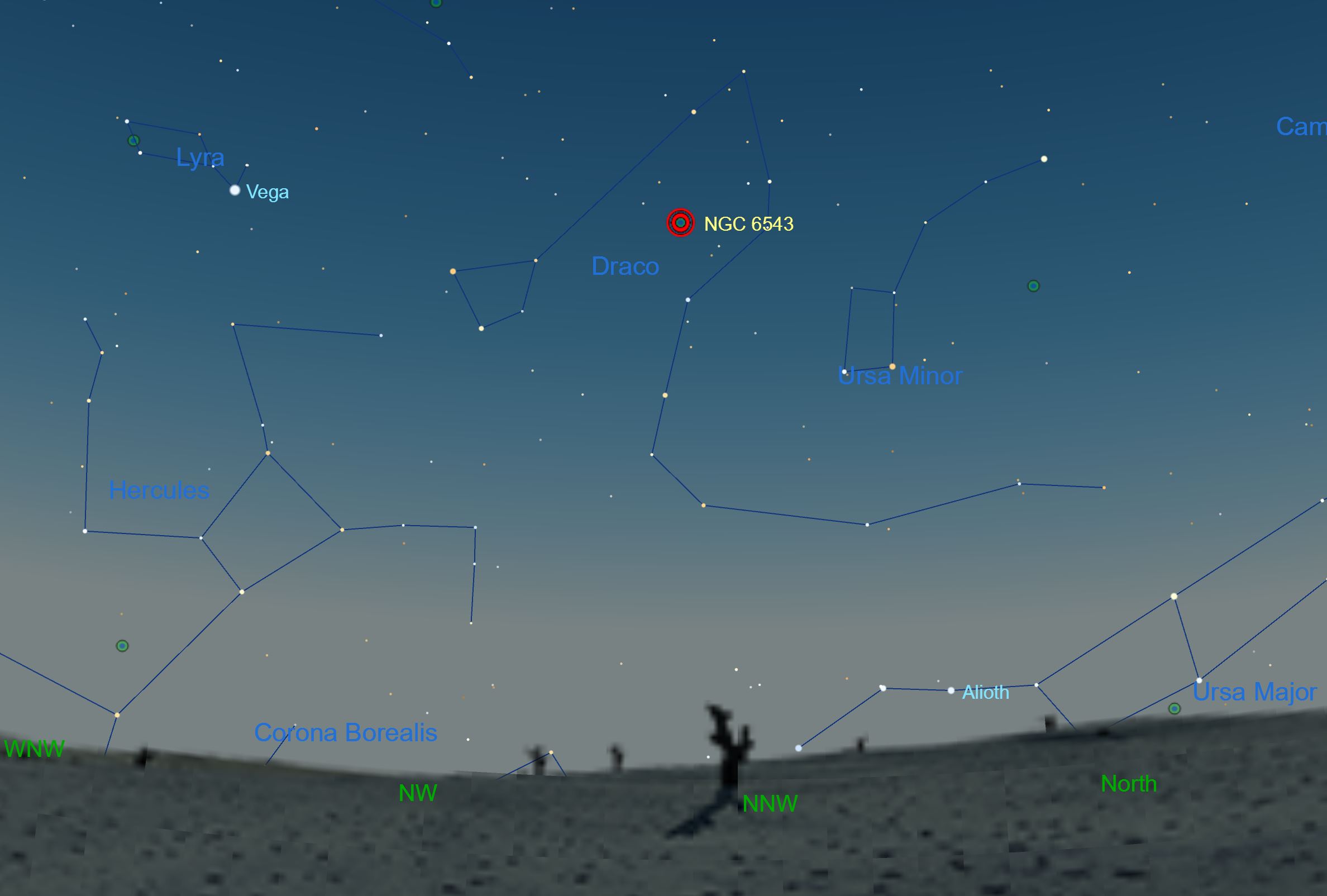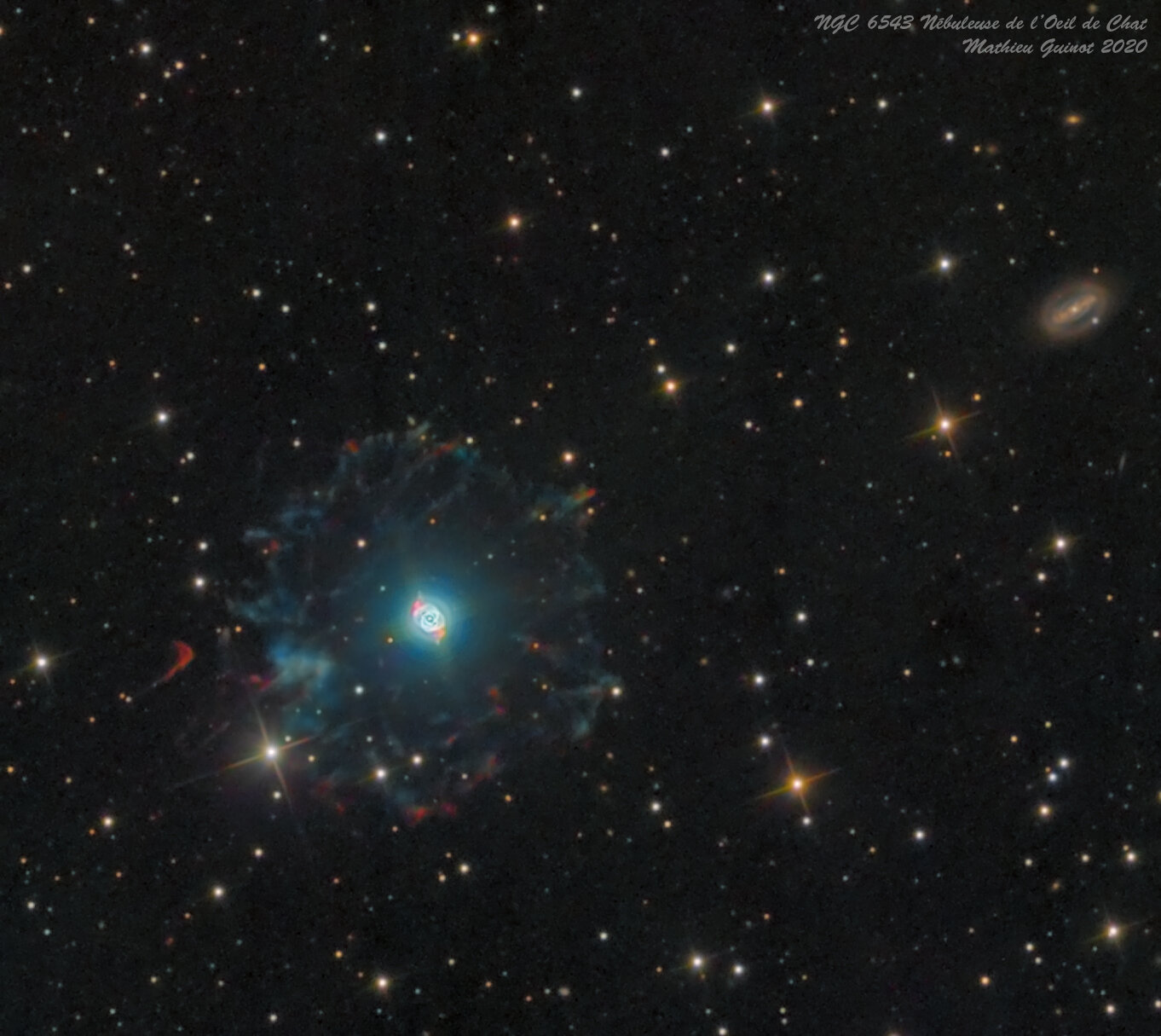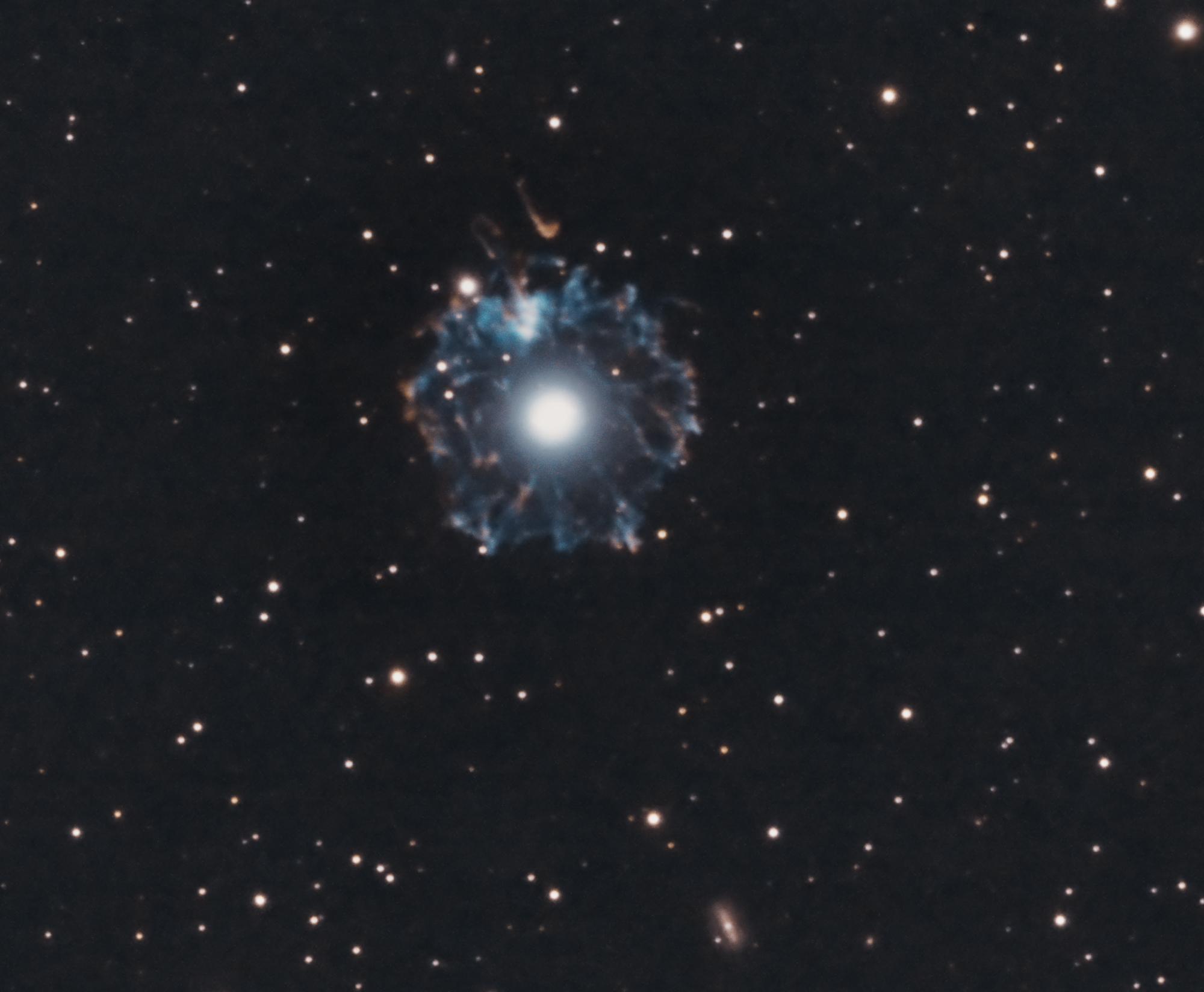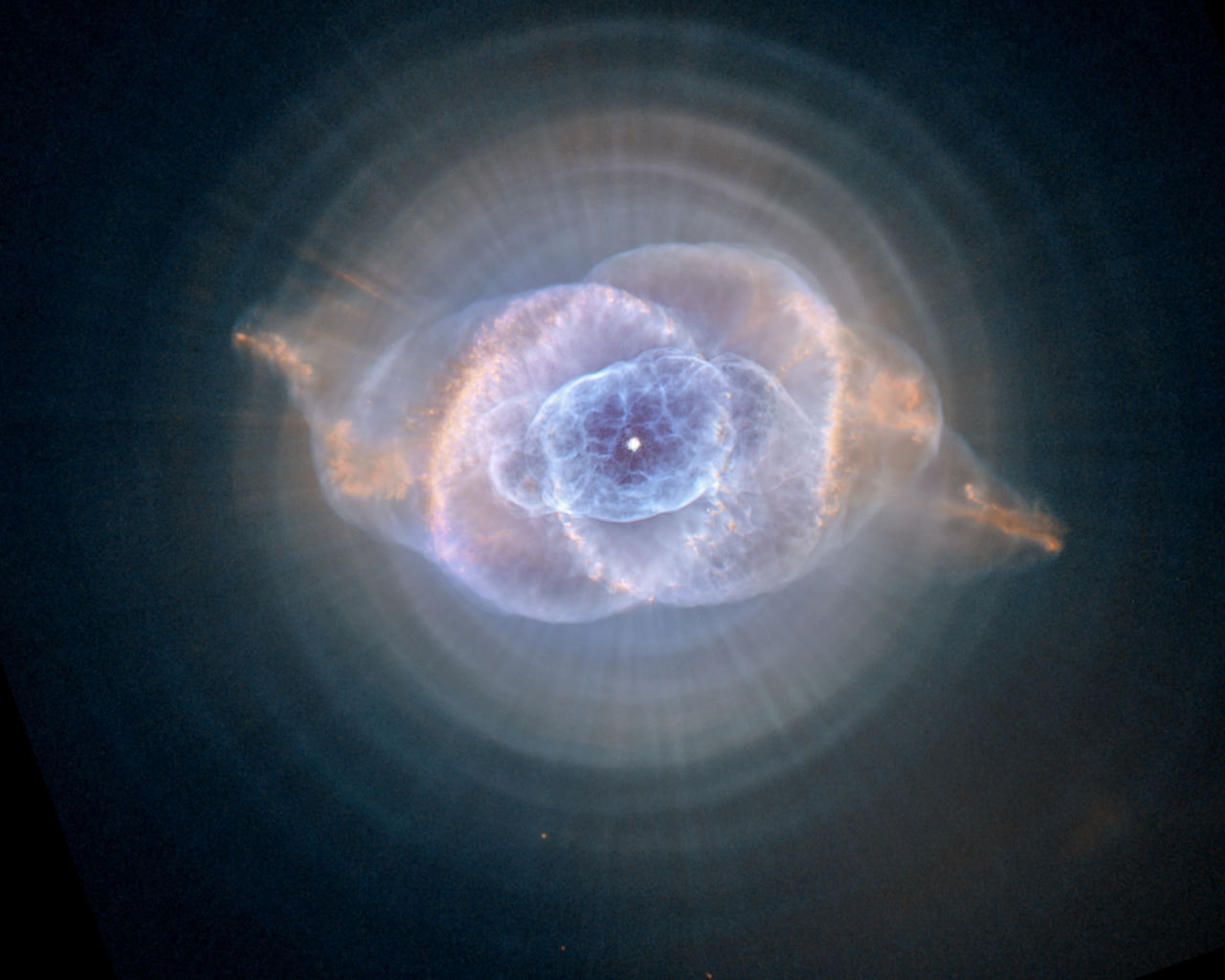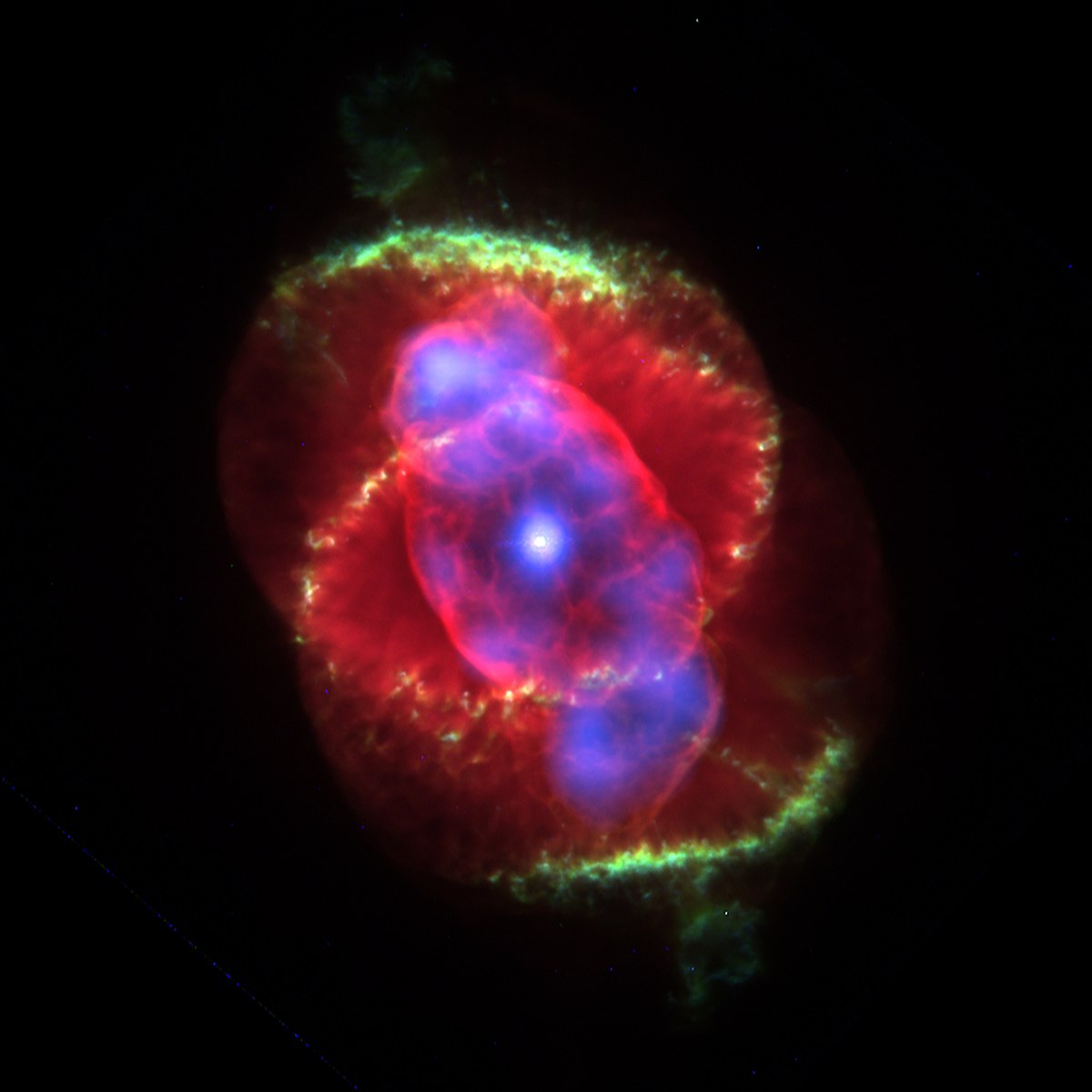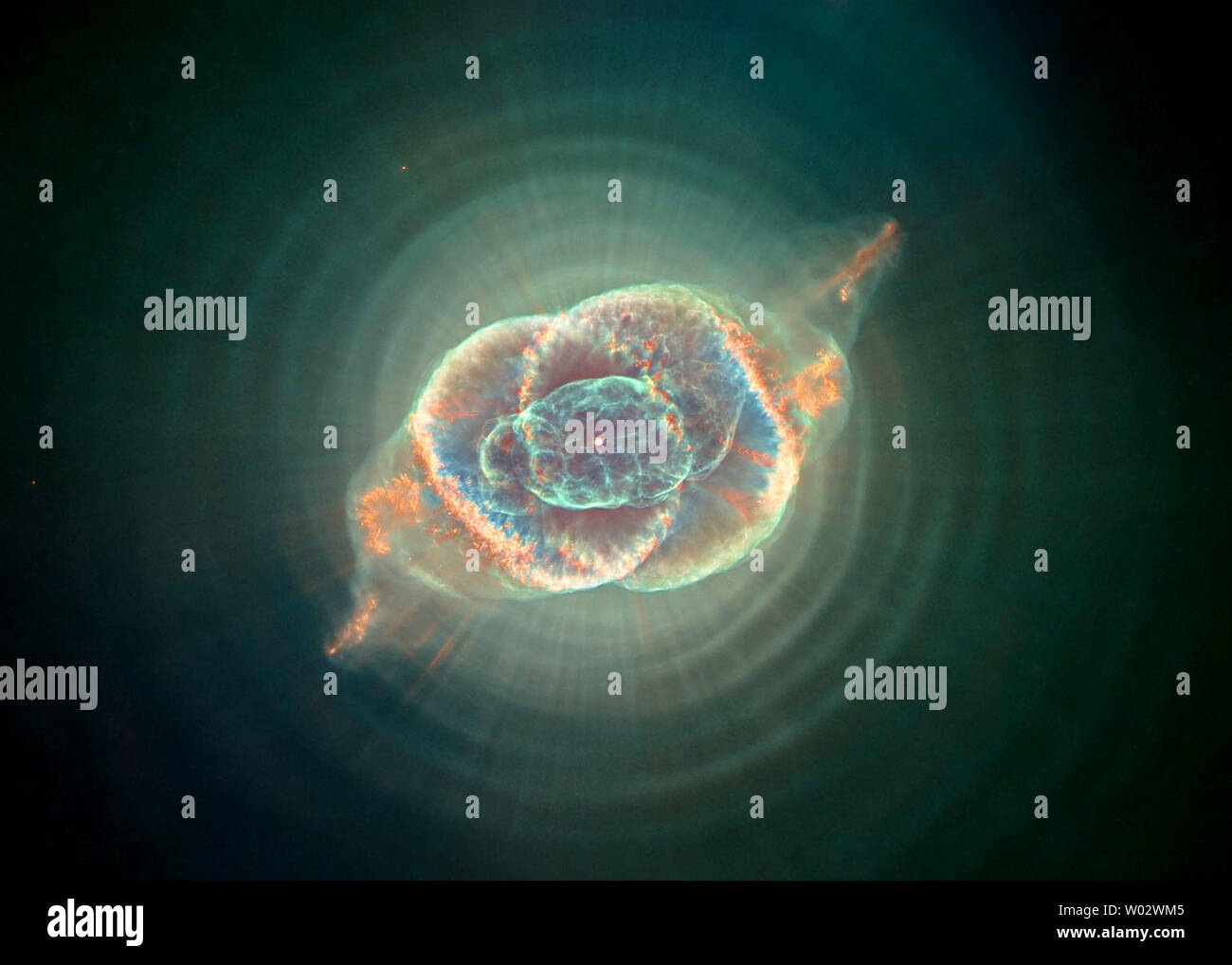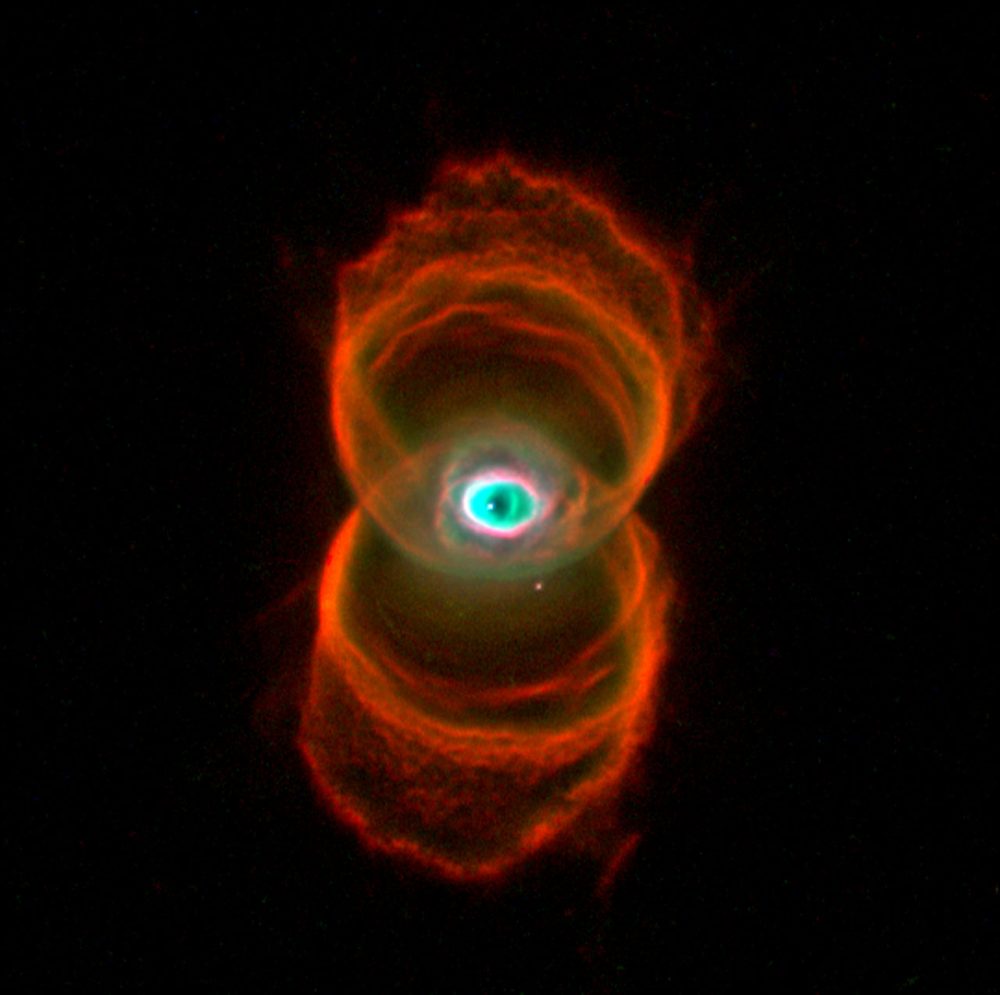Cat's Eye Nebula Age

Huggins observations were the first indication that planetary nebulae consist of extremely rarefiedgases.
Cat's eye nebula age. The Cat Eye Nebula NGC 6543 is a mythical object from the deep sky of the Northern Hemisphere. The Spectacular Cats Eye Planetary Nebula 33 Thousands of years ago a star reached the end of its life and began to eject its outer layers forming one of the most complex planetary nebulae in the sky. The nebulas structural complexity may be the result of material being expelled from a binary central star but the existence of a binary companion has not yet been.
There he built himself a telescope and started to study astronomy. When a Sun-like star nears the. A classic planetary nebula the Cats Eye NGC 6543 represents a final brief yet glorious phase in the life of a sun-like star.
The Cats Eye Nebula NGC 6543 is a planetary nebula in the constellation of Draco. Structurally it is one of the most complex of the known nebulae. The different age material then interacts to form the various shock waves knots you can see.
Structurally it is one of the most complex nebulae known with. It is a Planetary Nebula expanding gas shell ejected from an end-of-life star in the constellation of the Dragon whose age is estimated at only 1000 years and the distance at only 5200 light years. High-resolution images from the Hubble Space Telescope revealed extraordinary structures such as nodes jets and arch-like features.
A planetary nebula forms when Sun-like stars gently eject their outer gaseous layers that form bright nebulae with amazing and confounding shapes. The alluring Cats Eye nebula however lies three thousand light-years from Earth across interstellar space. Herschel was a German-born astronomer who emigrated to Great Britain at age 19.
Planetary nebulae are like snowflakes. In 1994 Hubble first revealed NGC 6543s surprisingly. The Cats Eye Nebula has a complex intricate structure which includes knots bubbles concentric gas shells and jets of gas as seen in hi-res images taken by the Hubble Space Telescope in 1994.
